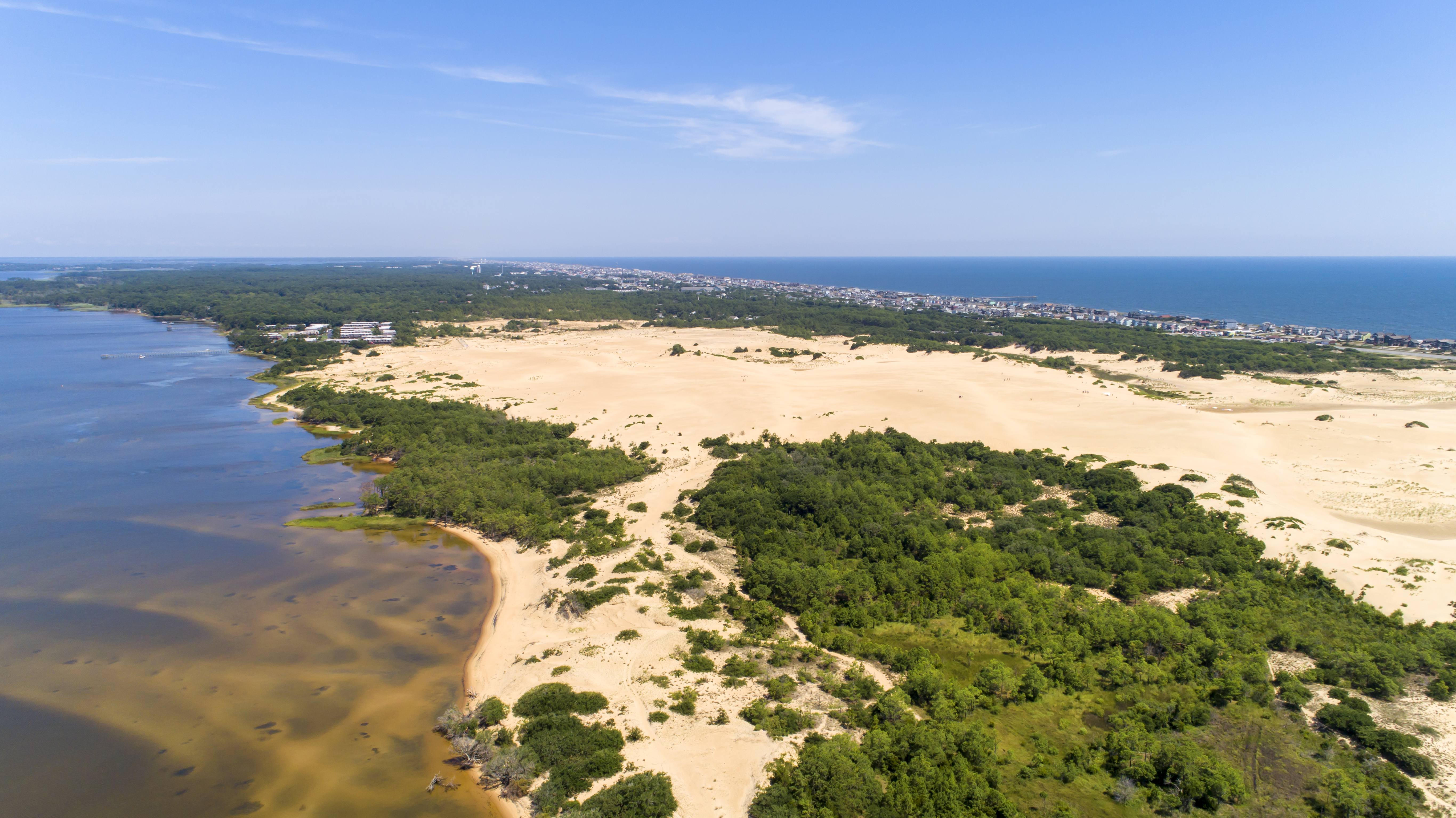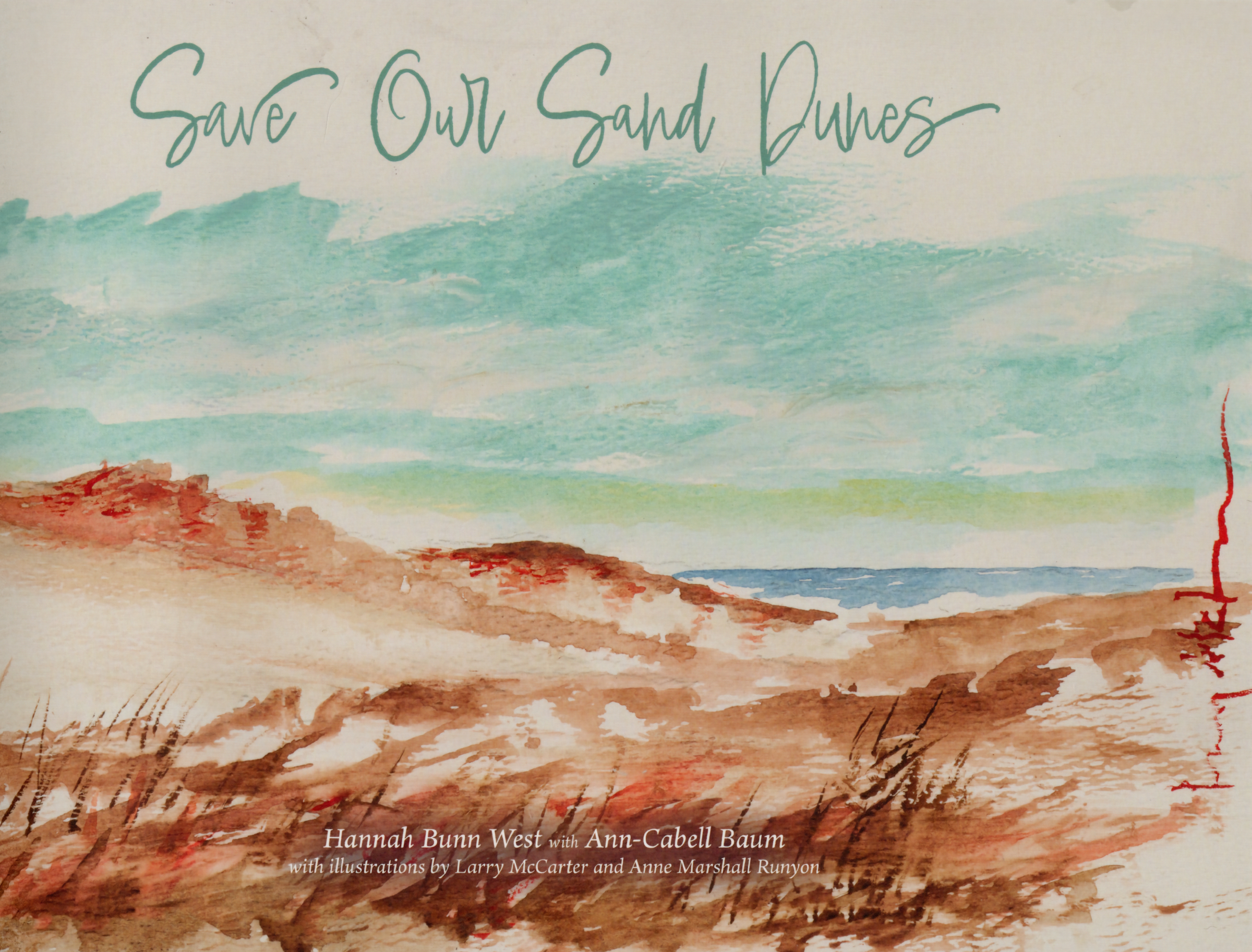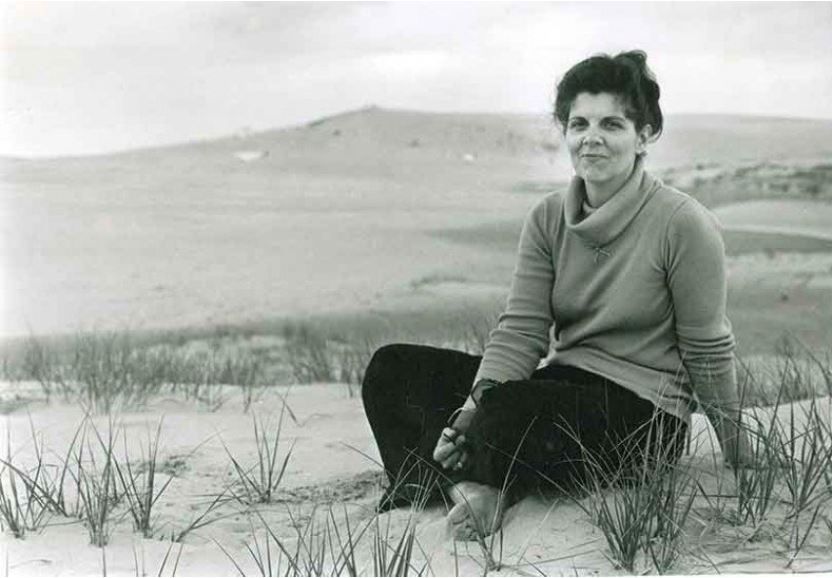Save Our Dunes—The Story of Saving Jockey’s Ridge for Children
The 50th anniversary of the official opening of Jockey’s Ridge State Park is just around the corner in 2025. It seems fitting, then, that Save Our Sand Dunes, a children’s book describing how Carolista Baum and her children saved the largest dune system on the East Coast, has just been published.
Written by Hannah Bunn West with Ann-Cabell Baum, Carolista Baum’s oldest daughter, the book is very well-written with marvelous illustrations from Larry McCarter and Anne Marshall Runyon.

West is an Outer Banks author of children’s books and at one time was a teacher, and it shows in her use of language. The book, geared toward kids between the ages of five or six to ten, has a cadence to the language that only someone who has worked with children extensively would know how to use.
The story it tells is compelling—and even better, it’s true.
Ann-Cabell and her siblings Inglis and Gibbs were playing on Jockey’s Ridge one day when they “…heard something odd and out of place. They followed the low, rumbling sound across the sands until they found a bulldozer, ready to dig into the base of the dune.
What follows is a wonderful story that almost seems to be told through the eyes of a child—which may very well be the case since Ann-Cabell, who collaborated on the book, was a child at the time.
There is the timeless image of Ann-Cabell’s mother marching, “over to Jockey’s Ridge with her three children trailing behind.”
There is the image of Carolista standing in front of the bulldozer and refusing to move, and how their mother’s determination taught a lesson about the importance of personal beliefs and quite literally taking a stand.

“Then they watched their mother plant her feet in the sand in front of the bulldozer and refuse to move,” West wrote.
The story of the petition that Carolina created is also told, describing what was certainly one of the most grassroots campaigns ever. An untold part of the story that comes out in the book is the job Ann-Cabell and her brother and sister had—dialing and re-dialing a phone until someone answered, at which time the phone would be passed to their mother.
That will certainly be a good teaching moment, if nothing else, since the point is made that the children were using the now rare and close to extinct rotary dial phone.
West is particularly adept at taking what could be difficult concepts and explaining them in language that children will understand. That is especially true when she relates the process of how North Carolina had to buy the land for the park.
The design of the book is fantastic. Along with the wonderful artwork, there are some compelling photos that will spark the imagination of young readers. Included in the images is a 1974 photo of Ann-Cabell standing along the side of the road in 1974, balloons in hand, ready to tell the public why Jockey’s Ridge is so important.
It does seem ironic that as the 50th Anniversary of Jockey’s Ridge approaches, there is a bureaucratic squabble over environmental protections (Area of Environmental Concern or AEC) that have been in place almost since the park opened on May 31, 1975. AEC protections limit development immediately adjacent to the park and prohibit removing sand from the dune.
Save Our Sand Dunes is available from Friends of Jockey’s Ridge, a “nonprofit organization established…for the support and maintenance of programs and the development of facilities of Jockey’s Ridge State Park.”
To order Save Our Sand Dunes, email Friends of Jockey’s Ridge at [email protected].

